The University Museum undertook its first project in American archaeology in mid-1895 when Max Uhle was engaged by mail to continue his work in the Titicaca Basin. Uhle, who laid the foundations of scientific archaeology in the Central Andes, had been working for the Museum für Völkerkunde in Berlin and was in La Paz, Bolivia, when he became the Museum’s first field worker in this hemisphere. Unfortunately, he was unable to secure permission to excavate in Bolivia, and after several exploratory trips in the high country around Lake Titicaca he went to Lima to begin his historic excavation at Pachacamac. At that large and important site, not far from Lima on the Peruvian coast, he discovered the evidence that gave us the first clear ideas of the long history of Andean civilization. It was not until the early I920’s that the Museum was again represented in the relatively neglected Andean field. Dr. William Curtis Farabee, who had spent several years in the forests of British Guiana and the Amazon, making valuable ethnological and archaeological collections for the Museum, went to dig and explore on the coast south of Lima. It was his last trip to the field, however, for he had contracted severe malaria in the service of the Museum and died without being able to publish the full results of his work in Peru.
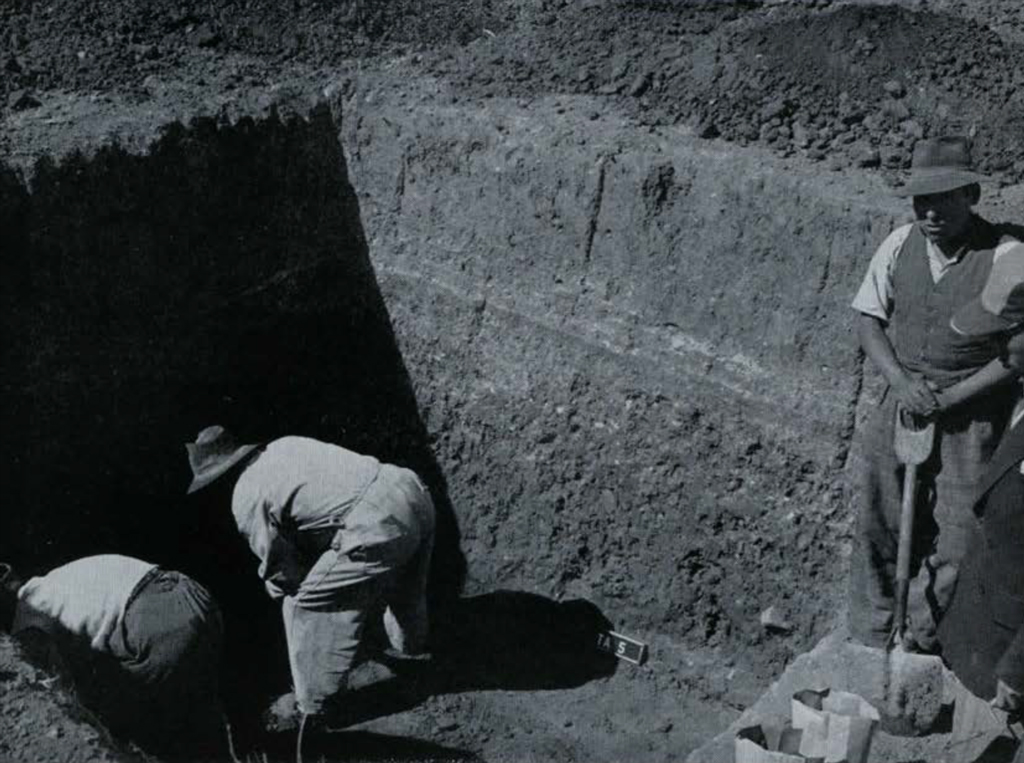
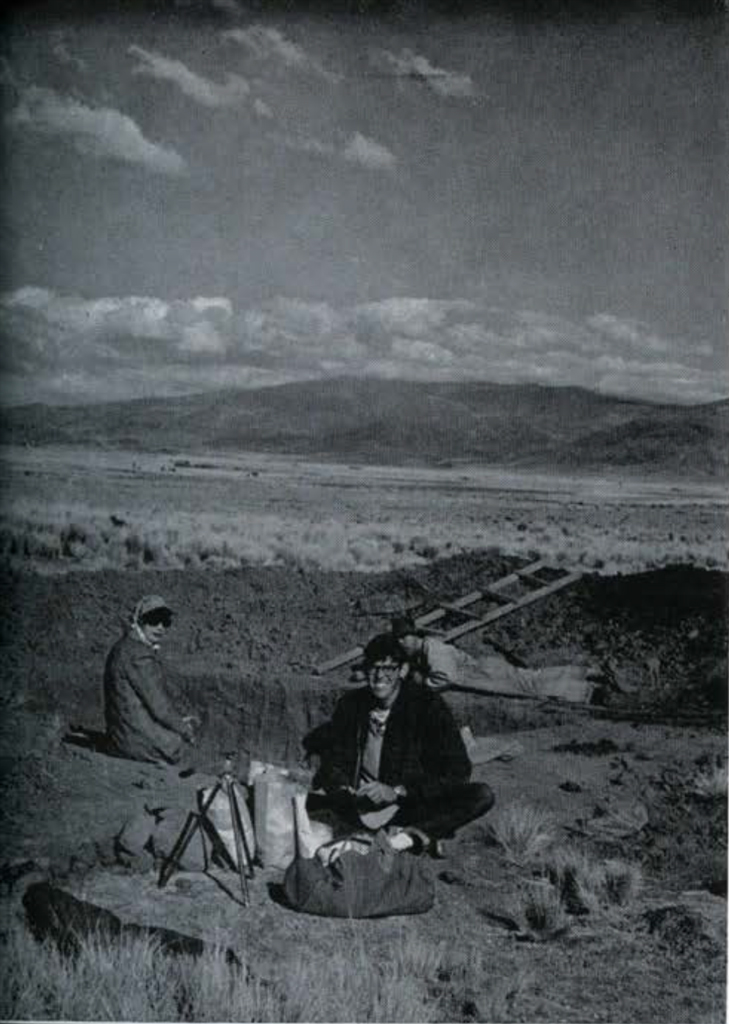
In the spring of 1955 the Museum’s early interest in Andean archaeology was revived when T was able to renew actively my abiding interest in the archaeology of the mountainous part of southern Peru and Bolivia. The heart of this area is Lake Titicaca, 12,500 feet above sea level, the highest body of water navigable by large vessels in the world, and the center of a large interior drainage basin of great archaeological importance.
Our expedition, supported in part by the American Philosophical Society, was not a large one as such projects go. Mrs. Kidder, and Mr. William Coe, now Assistant in the American Section, accompanied me and Mr. Alan R. Sawyer, Assistant Curator of Decorative Arts in the Art Institute of Chicago, worked with us for two months. We had originally hoped to divide our time about equally between the Bolivian and Peruvian sides of Lake Titicaca (the international boundary cut, the Lake roughly in two). As it turned out we had only a few weeks to devote to the Peruvian side; fortunately they were most productive.
Why did we choose the Titicaca Basin when there are so many other interesting, unworked, and undoubtedly rich sites in less remote, and certainly lower and warmer places? The answer requires a brief review of what has been done in Peru and Bolivia and what needs to be done, and brings us again to Max Uhle and his early work in the highlands and his much more extensive digging on the coast, both for the Museum and later for the University of California. Uhle had spent a good deal of time at the great site of Tiahuanaco, in Bolivia on the treeless high plain that surrounds much of the Lake. He knew that the great ruins of large stone enclosures and of artificial mounds, once faced with cut stone, the stone statues and the distinctive pottery style of the site were not the work of the Incas who conquered the entire area only shortly before the advent of the Spaniards. Tiahuanaco, therefore, had to be earlier than the Inca Empire.
His knowledge of Tiahuanaco style enabled him to recognize its presence in somewhat altered but unmistakable form, again in pre-Inca position, in his excavations at Pachacamac and elsewhere along the Peruvian coast. He thus established the presence of two widespread and easily identifiable styles, chiefly represented in ceramics—one that of the late Inca, spread as they conquered from their capital at Cuzco, the other, earlier, presumably having spread from Tiahuanaco. He also identified a number of local styles separating the two widespread horizons. Starting in the twenties other archaeologists, notably Professor A. L. Kroeber, of the University of California, further analyzed Uhle’s unpublished collections and began to do serious field work on the coast to extend the Uhle chronology and learn more about the coastal aspect of Andean civilization. This work is still going on, and has resulted in a chronology that goes back to about 2500 B.C. (on the basis of radiocarbon dating) on the north coast of Peru. It reaches a time before pottery was being made or maize was being cultivated. Another major, widespread “horizon” marked by a spectacular art style with strong feline motifs, has been discovered. This is called “Chavin,” after a site in the northern highlands. It does not reach the Titicaca area, and it precedes the coastal Tiahuanaco style by many centuries. We have, therefore, as a result of work that has been relatively small in comparison to that devoted to other parts of the world, a very satisfactory outline of the cultural history of the north coast of Peru; other parts of the coast are now being comparably worked and will soon be as well understood.
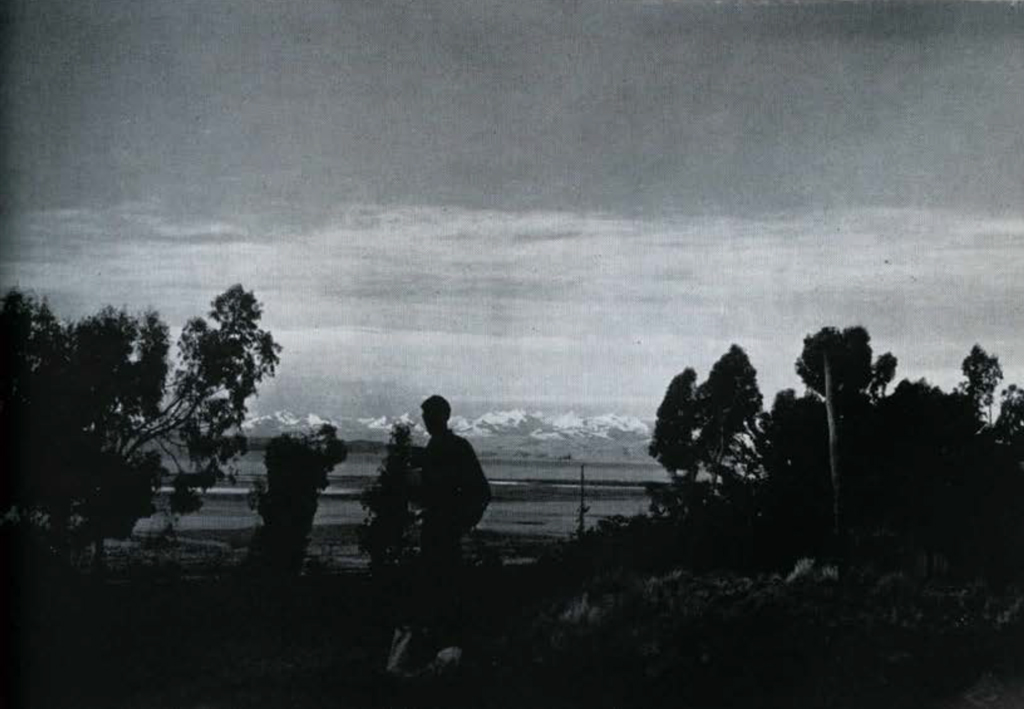
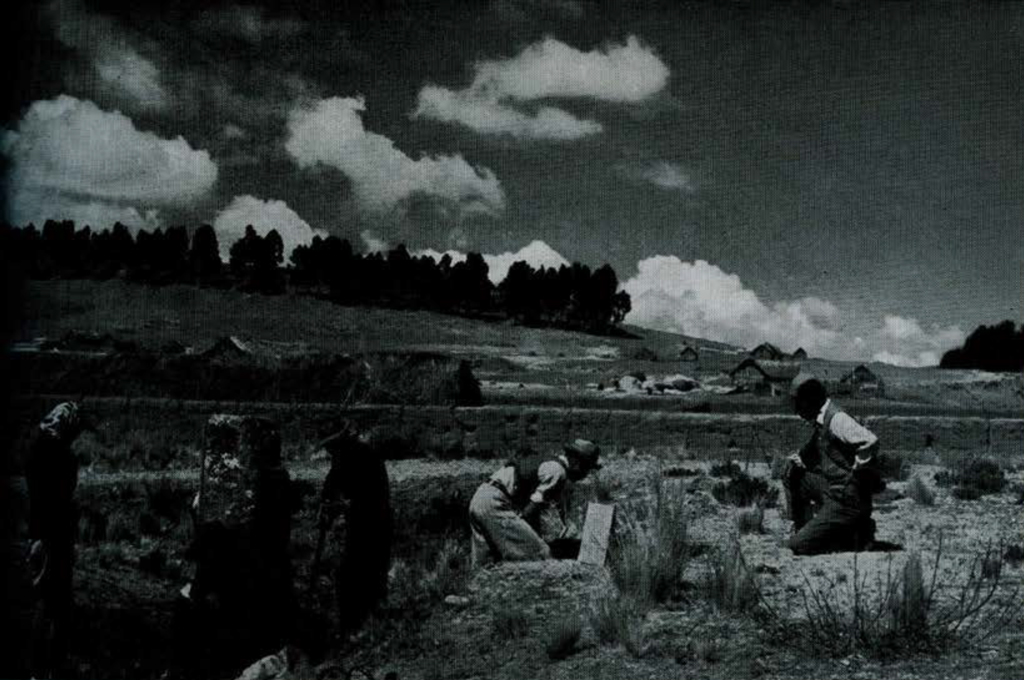
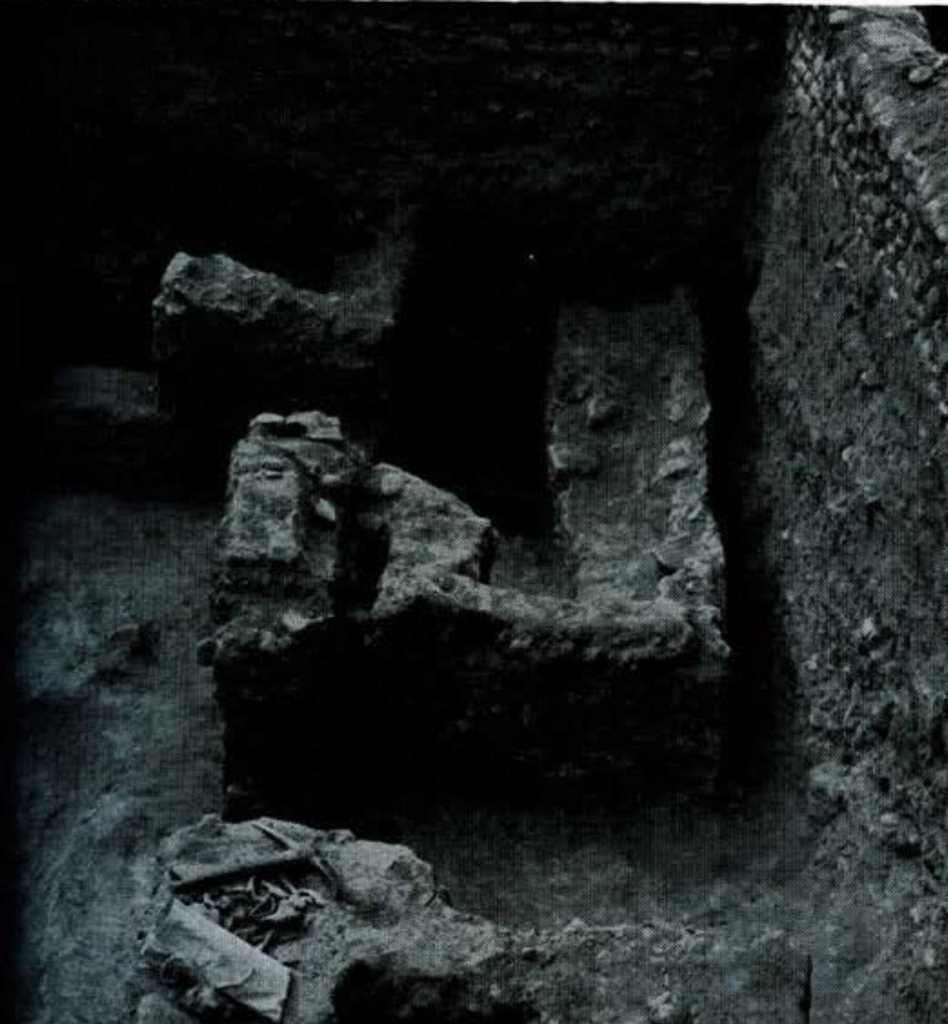
During the last thirty years, however, while great strides were being made on the coast, very little was done in the highland basins that we know provided the only arable land for the Inca, their conquered neighbors and their predecessors, including the builders of Tiahuanaco and Chavin. From the single fact that the three widespread “horizon styles,” Inca, Tiahuanaco, and Chavin, have, or in the case of the two latter, seem to have, highland origins, it is obvious that Andean civilization as a whole cannot be understood by limiting our knowledge to the coast. There is a great deal of evidence that there was trade and contact across the mountains as far as the forests of the eastern slopes. In the highlands the llama and alpaca were domesticated, thus providing the source of wool for the extraordinary textiles of the coast. Highland potatoes and other root crops were traded to the coast, and the highlands were the source of gold, copper, silver, and tin. It is apparent that Andean civilization could not have developed as it did without the highlands and without constant interaction between coast and highland.
In spite of many good opportunities to do so, only a few archaeologists have worked in the highlands; the area has been sadly neglected. The reason for this imbalance in attention to the two geographically contrasting zones is that conditions on the coast favor excellent preservation ,of perishable materials such as textiles and that vast cemeteries are easy to find and dig. Furthermore, Uhle’s early work challenged his colleagues and successors to carry it on. There has not been so great a stimulus to concentrate on highland problems. To give but a single example of how little interest they have aroused, it was not until 1941 that Dr. John H. Rowe, then a student of mine, began the first seriously scientific attempt to find out what lay below the remains of Inca occupation in the Cuzco district. This is as though Rome or any other great seat of empire had failed to arouse any interest in its early history.
The foregoing explains why we wished to do something to correct the disparity between our knowledge of coast and highland by going to the Titicaca Basin. We were not going to an altogether unknown area, for after Uhle left Bolivia, the late Wendell C. Bennett, working for the American Museum of Natural History, excavated at Tiahuanaco and at several other sites on the Bolivian side of the Lake, including one called Chiripa that seemed surely to be even earlier than Tiahuanaco. I had also worked on the Peruvian side of the Lake, so that we were in a position to start an attempt to build a regional chronology and to add to the still very scanty knowledge of several periods of the history of the lake basin.
When we arrived in La Paz in early June, we hoped to concentrate on the earlier phases of Tiahuanaco culture and to learn more about Chiripa. We had not anticipated that we would be permitted to dig at Tiahuanaco, and we were therefore very pleased, and most grateful to the Ministry of Education, when it was suggested that we do so. Bennett, in 1932, had dug a number of pits at the site, finding three sequent pottery styles that he called Early, Classic, and Decadent. The Classic is quite surely associated with the monumental stone architecture and sculpture, the Decadent with the reuse of much Classic building stone, but the Early style was represented by potsherds in only a few of the pits and by some vessels taken from graves many years ago.
We were, therefore, anxious to obtain more information about Early Tiahuanaco, and made arrangements to dig at the site.
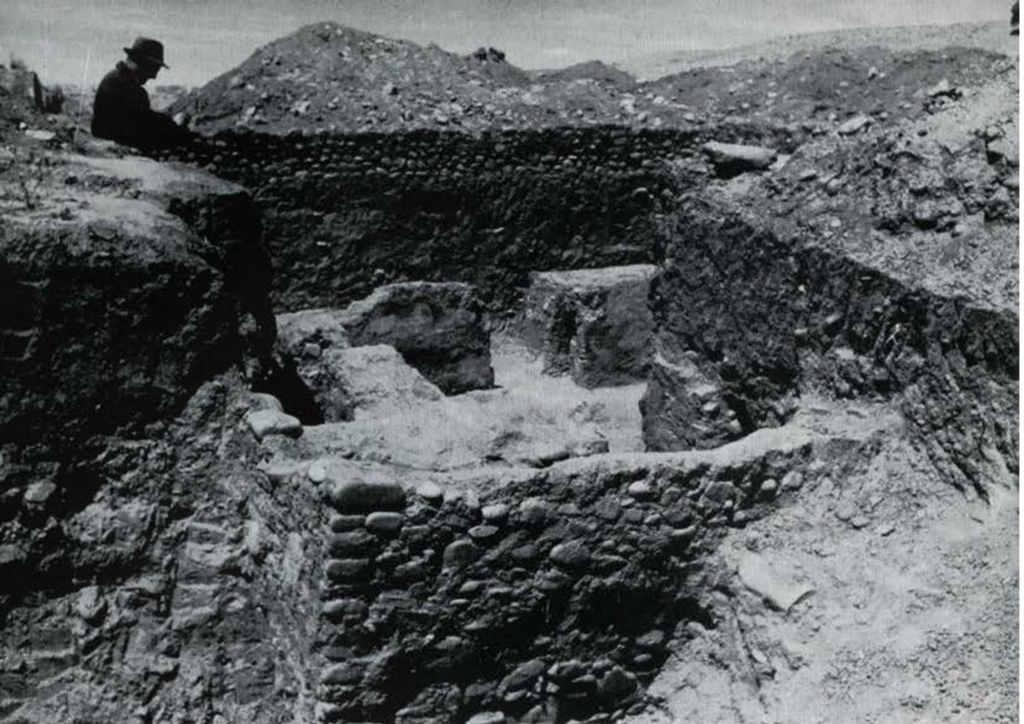
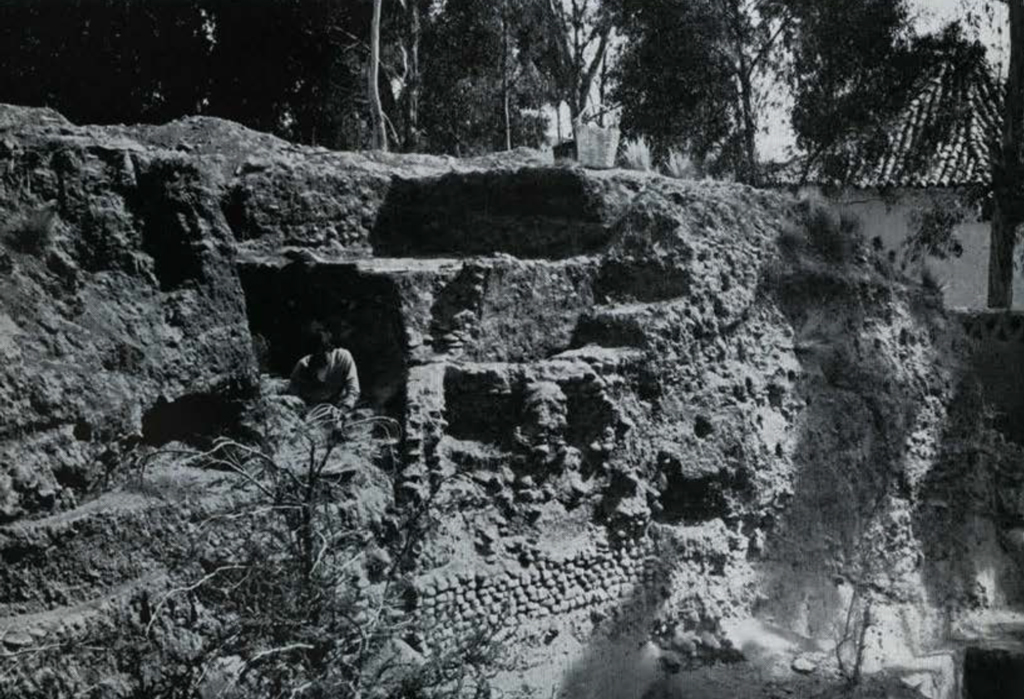
Tiahuanaco is on the railroad between La Paz and Guaqui, Bolivia’s lake port, but it is an Indian town with rather primitive accommodations. We were most kindly invited to stay with Mr. and Mrs. Fritz Buck, of La Paz, who have been interested in the ruins for many years and had built a house near them. We were also most fortunate in having with us the Assistant Director of the National Museum, Sr. Gregorio Cordero, M., who later went with us to Chiripa. Sr. Cordero speaks fluent Aymara, the Indian language of that part of Bolivia. Without his help we should not have been able to communicate with the Indian workmen, and since he is a very able archaeologist, he could direct the men far more efficiently than an untrained interpreter.
We dug two pits at Tiahuanaco, each as close as possible to the two pits in the bottom levels of which Bennett had found Early Tiahuanaco pottery. This kind of digging is unspectacular. We proceeded by levels of 25 cm. (about 10 inches) each, keeping all potsherds and other objects, including bones, separate from the contents of other levels. We also saved all charcoal and burned bone from each level, placing it in polyethylene bags, for radiocarbon dating. If these samples are not contaminated by grass roots or badly affected by ground water, they should provide us with the first radiocarbon dates from the Andean highlands and allow us to compare them with dates from the coast. The age of Tiahuanaco has always been a question of guess-estimating, and many fantastic theories of great age have been proposed. These are taken very seriously by some Bolivians; it will not surprise us if our radiocarbon dates are not accepted by many people.
We found what we considered to be Early Tiahuanaco remains in both. our pits, and have been able to add some bits of information about the period. For example, we are sure that arrowheads were in use at that time; there are thousands of arrowheads at Tiahuanaco, but hitherto they have been considered to be from the Decadent or later, post-Tiahuanaco periods.
Tiahuanaco, we now believe, is probably not the best place at which to study Early Tiahuanaco culture. To reach it, pits have to be too deep to allow lateral expansion without an enormous amount of digging, and in our best pit we reached ground water and finally had to stop digging before we reached sterile soil. The only other place at which Early Tiahuanaco is known to occur is on the Island of the Sun, in the Lake. We hope that some day we shall be able to dig there and that the Early Tiahuanaco phase will not be so deeply buried as to make it difficult to expose a larger area, perhaps sufficiently extensive to give us some idea of the kinds of houses in use at the time and even of village plan.
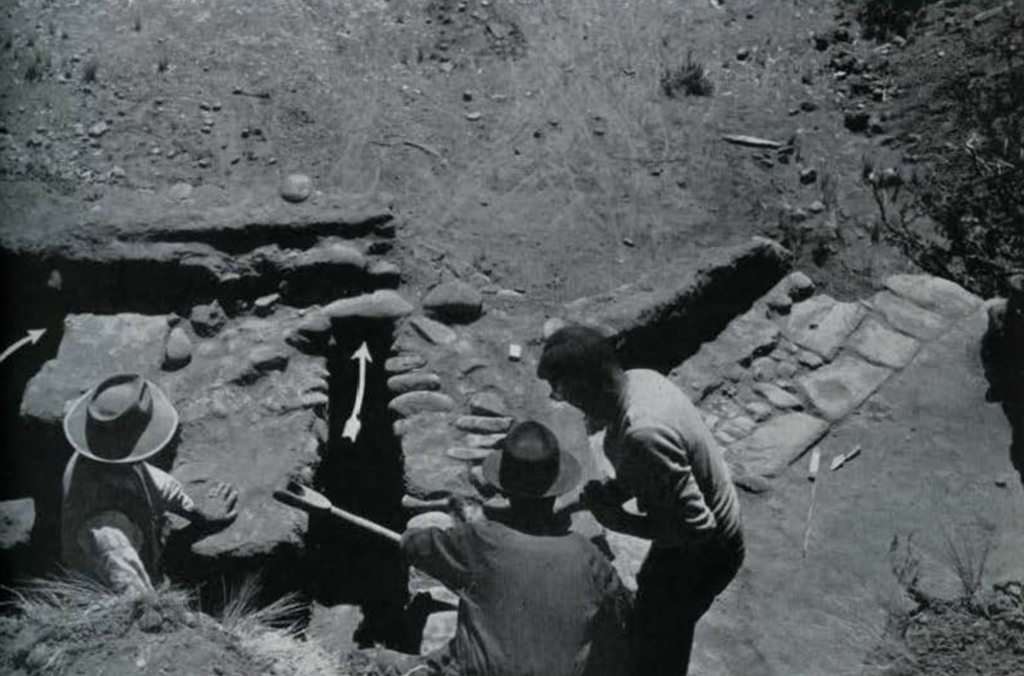
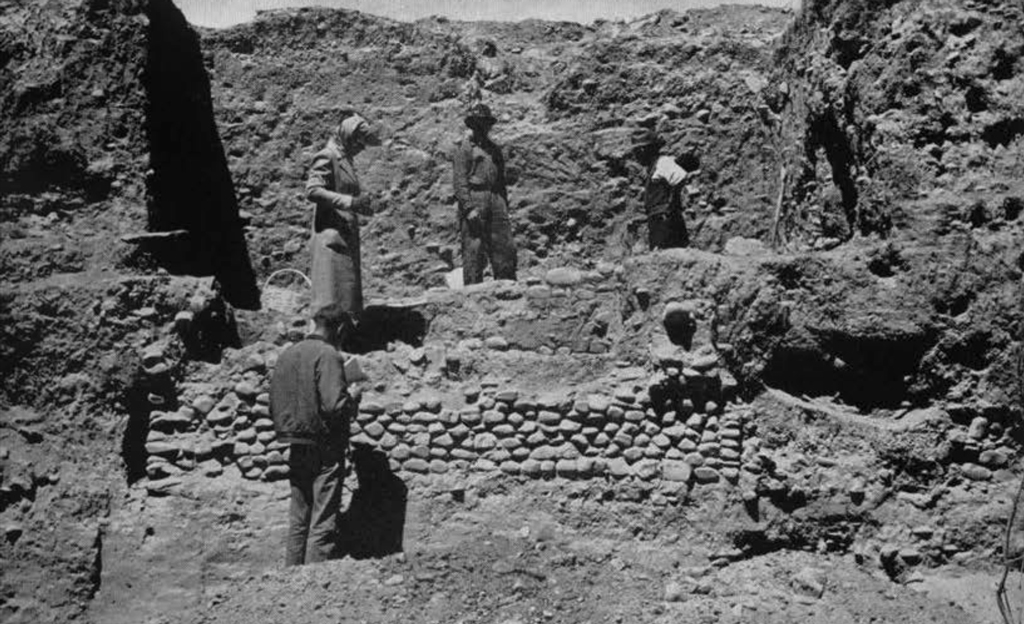
Since Bolivian law prohibits the permanent export of antiquities, we returned to La Paz to spend several weeks “working up” our Tiahuanaco finds. This is the aspect of archaeology that is so often overlooked by those romantic souls who forget that the work of the archaeologist is only just beginning when be digs up anything from the past. Thousands of potsherds must be examined, classified, and counted; specimens to be illustrated must be set aside and drawn and photographed. Faced with this problem in La Paz, we experienced the kind of international cooperation and good will that would make short work of “global tension” could it but be transferred to economic and political spheres. Dr. Manuel Liendo Lazarte, Director of the National Museum, Sr. Cordero’s chief, closed an exhibition gallery for our use, made available ample table space, and, in short, provided us with every possible facility for the analysis of our Tiahuanaco collections. Sr. Cordero’s hard work with us in the field and Dr. Liendo’s unfailing help in La Paz made our work a truly joint enterprise.
After finishing the analysis and recording of the Tiahuanaco material, we loaded our equipment on a truck and went to Chiripa. The site is a village mound that must have been occupied for a long time, overlooking the lake shore northwest of Tiahuanaco. We were most kindly offered the hacienda house by Sra. Hortensia Pena v. de Ituralde and her sister, Srta. Sara Pena, the owners of the farm on which the ruins are situated. This made life at Chiripa quite easy, since the house was only a few steps from the mound. We bad some difficulty in getting supplies; except for potatoes, eggs, mutton, and occasional vegetables, there is little to be had in rural Bolivia. Fortunately Srta. Elena del Carpio came to our rescue with her Willys station wagon, and made regular trips from La Paz with beef, bread, butter, evaporated milk, and fruit, as well as our mail. We had found it impossible to persuade anyone else in La Paz to risk a vehicle on the rough road to Chiripa, so Srta. del Carpio’s willingness to risk her little car made the difference between comfort and relative hardship. Such a difference is important when you are working as hard as we did at Chiripa. At high altitude with freezing temperatures at night and occasional sleet and snow, good hot food and a comfortable bed in a real house help enormously to get the work done.
Chiripa was quite different from Tiahuanaco archaeologically. instead of pits dug into flat ground, we were exposing buildings in a rather complex situation that Bennett had first exposed in I934. He had found what appeared to be a circle of houses, about fifty meters in diameter, around the top of the mound. Inside the circle there was a sunken temple court, made in Decadent Tiahuanaco times, much later than the houses of the Chiripa village. Bennett made a deep trench to the center of the mound and exposed two Chiripa houses. He was unable to analyze his collections fully, so our intention was to add to his data on the houses, collect charcoal for radiocarbon dating and secure a collection of pottery and other objects for complete study. When we examined the mound we found that it had been cut away at right angles to Bennett’s trench, exposing a long, high face that needed only to be cleaned to provide a stratigraphic picture that tied in perfectly with Bennett’s and made it possible to interpret the history of the village far better than was possible by means of a single trench.
In brief, we verified the full circle of houses at the top of the mound that Bennett had suspected; Mr. Sawyer made a new map, based on our work and other exposures made since Bennett’s day. We then dug down in the newly exposed face, under one of Bennett’s houses that had been nearly altogether cut away. Near the bottom of the mound in this excavation remains of two earlier houses appeared-we suspect that they are part of an earlier circle underlying the upper one.
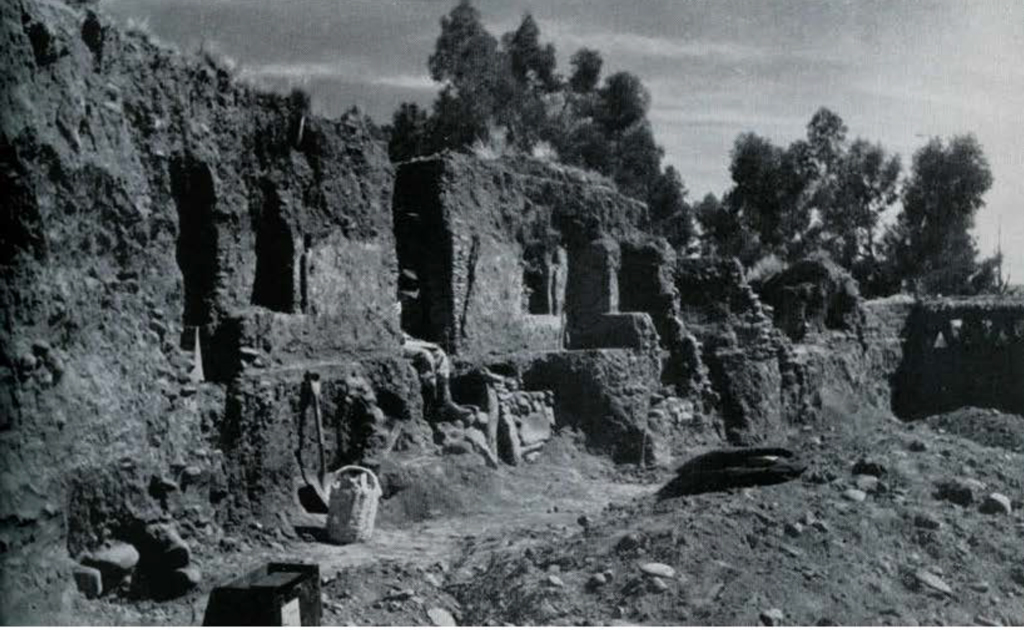
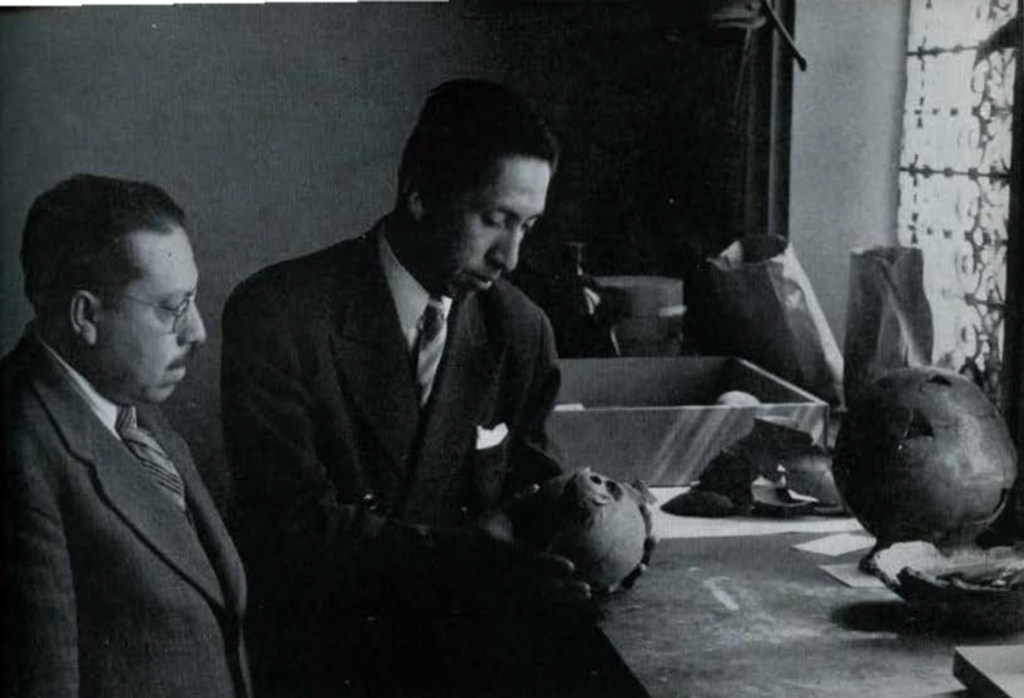 Fig. 18. Dr. Liendo and Sr. Cordero examine a Chiripa vessel in the Museo Nacional Tiahuanacu. Restored jar at right is also from Chiripa.
Fig. 18. Dr. Liendo and Sr. Cordero examine a Chiripa vessel in the Museo Nacional Tiahuanacu. Restored jar at right is also from Chiripa.
Chiripa houses of the upper level were made of smooth, water-worn stones, set in large amounts of mud. Each is a single room, from about thirteen to eighteen feet long by eight to nine feet wide, inside measurement. The walls were made double to about chest height; the space between was slabbed over, forming a shelf over a series of bins between the double walls. Openings like small windows gave access to the bins. Doorways were provided with covered slots into which sliding doors could be run. What the sliding doors were made of is speculative; planks in this treeless area seem unlikely. Heavy reed matting framed with sticks is a better guess.
Some of the houses, at least, were burned; we suspect that they had roofs of reed thatch, and that they were burned by enemies, since it is almost impossible to fire a roof accidentally at the altitude of Chiripa.
The lower houses were in much poorer condition, having been leveled off to facilitate later construction. They had niches in the walls, but no doublewall bins. There is still a great deal to be done at this level, and there are still a number of intact tombs under the upper level of houses. We opened several rock-walled graves that contained pottery, green stone beads and sometimes beads of rolled gold leaf.
We are now convinced, for a variety of technical reasons, that Chiripa is considerably older than Tiahuanaco. We have excellent samples of charcoal, much of it without any possible contamination, that should provide dates for this most interesting early culture.
After leaving Chiripa in mid-September, we worked on the collection in La Paz and arranged to borrow for study the large quantity of unpainted ware for which more time was needed than we could spare. Mrs. Kidder and I then crossed the Lake by steamer to Puno, the Peruvian port, where we were met by Dr. M. Chavéz Ballón, an old friend now a professor at the University of Cuzco. Together we made two small excavations near Pucara, in the northern part of the lake basin. These produced charcoal for use in dating the Pucara culture, related to Tiahuanaco but not as yet accurately placed in time, and pottery from a new and earlier culture. We call it Qaluyu; it is represented by only a small collection of potsherds some of which are painted in brown or red on a cream slip. Others of plain brown or gray are decorated with wide groovings. We do not yet know how this phase is related to others in the area.
ln retrospect we seem to have raised far more problems than we have even begun to solve, and I venture to predict that this will continue to be the case for a long time unless a great many more archaeologists become interested in this hard, often difficult, but rewarding region.

